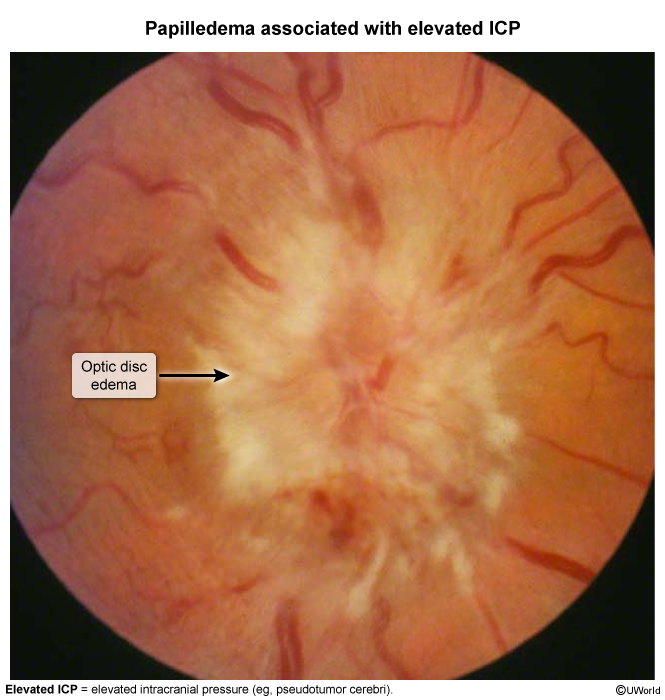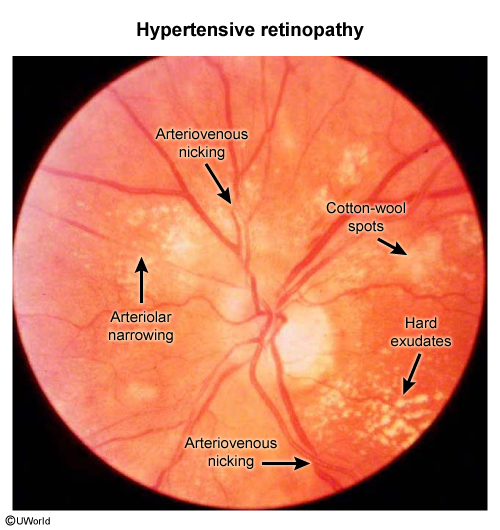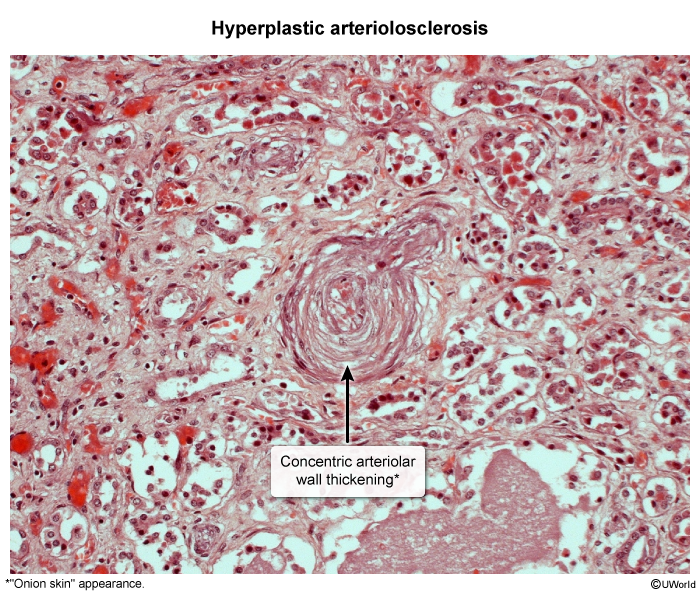Hypertensive Emergency
Article Sections
Introduction
Hypertensive emergency refers to severe elevation in blood pressure (BP) associated with acute end-organ damage. It is distinguished from hypertensive urgency (ie, severe asymptomatic hypertension), which is a marked elevation in BP (systolic pressure ≥180 mm Hg and/or diastolic pressure ≥120 mm Hg) without end-organ damage (discussed in a separate article). The distinction is crucial because hypertensive emergency requires immediate intervention to prevent morbidity and mortality, whereas hypertensive urgency can be managed with more gradual BP reduction.
Pathophysiology
Normally, with gradual blood pressure rises, the arterioles can adjust by dilating or constricting to regulate blood flow. In hypertensive emergencies, these autoregulatory mechanisms fail, leading to a rapid rise in BP. The mechanisms underlying hypertensive emergency include endothelial dysfunction and neurohormonal activation.
Continue Learning with UWorld
Get the full Hypertensive Emergency article plus rich visuals, real-world cases, and in-depth insights from medical experts, all available through the UWorld Medical Library.
Images


